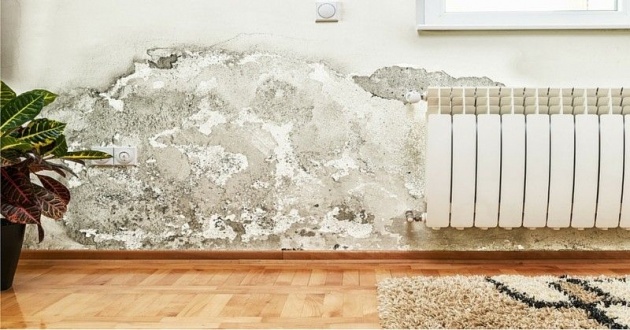
Mold illness may be the most prominent health problem physicians are missing today — a “hidden” pandemic that’s sweeping the nation.
It has been acknowledged that black mold is a serious health hazard and one which should be treated by professionals – yet the extent of the problem is often underestimated.
Black mold requires high moisture content in order to grow and is commonly associated with wallpaper or sheetrock – however molds can grow anywhere there is damp – in the ceiling, basement, wall cavities, storage boxes, clothes, air ducts, insulation, furniture, windows and floor.
One of the issues with the mold is not just the mold itself, but the fact that it’s biological processes producemycotoxins – toxic substances that may cause identifiable diseases or health problems, weakened immune systems without specificity to a toxin, allergic reactions and even death. Mycotoxins can appear in the food chain as a result of fungal infection of crops, either by being eaten directly by humans or by being used as livestock feed. They can also be breathed in the case of mold contamination of a house. [1]
The first step towards curing a mold problem in a house is identifying and fixing the cause of damp. It may be a leaking pipe, fixture or appliance, a bathroom without adequate ventilation or a fault in the roof, gutter or flashing.
It’s advisable to have a full inspection of the house including crawl spaces, attic and walls, looking for any signs of moisture damage.
Mold spores are found almost everywhere in small quantities as they are minute and can remain airborne. Where conditions are right (sufficient warmth, moisture and organic matter), fungi proliferate into colonies and mycotoxin levels become high.
Another important step is air purification and if your home has had significant mold problems, a high quality air purifier is advised. If you have had serious mold-related sickness, you might wish to investigate a “serious” air purifier such as the IQAir Healthpro.
When it comes to the cleanup of the mold itself, it is advised to seek professional help if the area of mold is greater than 6 inches square. Mold is treated as a hazardous waste and mold remediation is typically done wearing breathing apparatus.
Water with a little bleach added is one of the standard products used for cleanup. But bleach itself is toxic and unpleasant. You may also be interested to know that tea tree is antifungal and can be used in mold cleanup. (our report on that is at the link).
Here’s a full report on Mold toxicity from Eat Local Grown – including a list of certified mold remediators:



